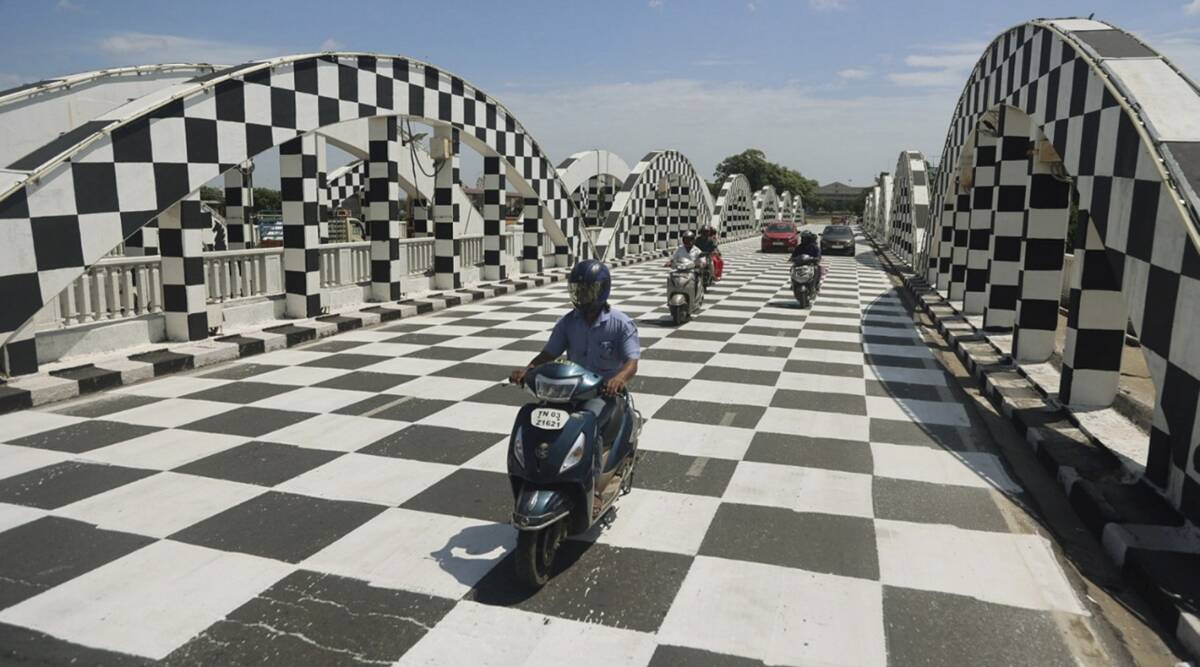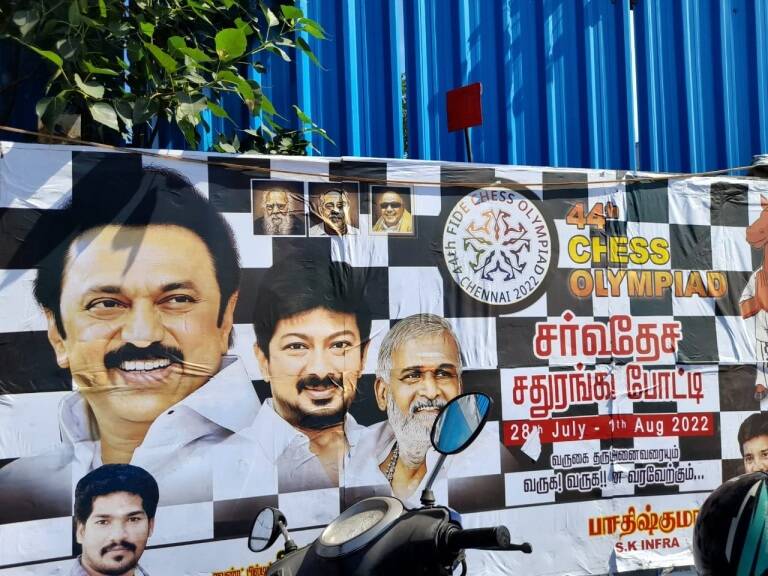The check-mates
As Chennai hosts the Chess Olympiad, looking back at a club in the then Soviet Cultural Centre, which was born at the height of the Cold War, amidst the Boris Spassky vs Bobby Fischer title bout frenzy, that sparked the city’s chess revolution
 Once Soviet Union gave way to Russia, the facilities became too steep. Chess.com
Once Soviet Union gave way to Russia, the facilities became too steep. Chess.comA month before what was considered the match of the century in chess — the World Championship title bout between Bobby Fischer and Boris Spassky in Reykjavik in 1972 — the House of Soviet Cultural Centre in then Madras approached Manuel Aaron, then the only international master in the country, to start a chess club. Aaron had no second thoughts. In a little time, and a fortnight before Spassky conceded defeat to Fischer over the phone, altering the chess dynamics of the world, Madras had its first formal chess club in the library of the Soviet centre.
If Fischer’s victory led to a chess boom in the US, hitherto a chess hinterland, it sowed the seeds of a chess revolution in Madras as well, laying the ground for it to emerge as the chess nursery of the country.
Aaron, now 86, recounts how the Soviet-US Cold War spilled onto the chessboard and reached as far as the Tamil Nadu capital at the time. “The match had so many layers that even those who did not follow chess started talking about it. The match was keenly followed even though there was no streaming or television coverage those days. We used to wait for some information from officials at the Cultural Centre,” he says.
The chess club was named after the legendary Soviet player Mikhail Tal, Aaron’s favourite, and one whom he would encounter in a Chess Olympiad match. The centre provided him all the infrastructure, Aaron says — chess blocks, boards, books and magazines like Schachmatny Bulletin, Chess in USSR, and 64.
Aaron would translate those into English, having taken up Russian at the centre so that he could access Soviet journals and make the same available to other chess players. “Western publications were expensive whereas the Russian ones were free. I thought it would be useful for the next generation to have access to chess literature,” he says.
 Vehicles ply on the Napier bridge, painted in a black and white checkered pattern, ahead of the 44th International Chess Olympiad at Mamallapuram near Chennai, July 16, 2022. (PTI)
Vehicles ply on the Napier bridge, painted in a black and white checkered pattern, ahead of the 44th International Chess Olympiad at Mamallapuram near Chennai, July 16, 2022. (PTI)
With a grand fee of Rs 4 a year for maintenance, the club soon had so many in the ranks that a separate small complex had to be built on the premises. Serious, semi-serious and recreational players spent hours here locked in intense games.
Aaron, meanwhile, hunted for a young player he could groom into a world champion. “I used to tell friends that given the right opportunities, I could produce the country’s first world champion in 15 years. In every young player that walked into the club, I looked for that spark,” he says.
Three years on, a five-year-old boy with big, round eyes and hair combed onto his temple came in. It was Viswanathan Anand, and Aaron spotted him almost immediately. “There was something about him, you knew he had a special talent,” he says.
After a year or two, Anand moved to the Philippines where his father worked. By the time he returned to the club two years later, he had a faster, evolved-for-his age game. “He had a tremendous blitz game, and I don’t remember him ever losing. The funny rule was that whoever lost should get up from their chair. Anand never got up,” Aaron says.
Occasionally the club would see international Grandmasters like Yuri Averbakh, Vladimir Bagirov and Evgeni Bebchuk drop in, and play a simul. This helped the development of chess tyros like Anand.
The real passing of the mantle came when Anand, 14, beat Aaron in a classical game in 1983. Four years later, he became the country’s first Grandmaster. The singular moment changed the history of Indian chess.
A few years later, after the disintegration of the Soviet Union in 1991, Tal Chess Club had to be shut, as the now named Russian Culture Centre began to demand a hefty rent.
 The faces of DMK luminaries, from the ruling party’s founder C N Anna Durai to former CM M Karunanidhi and now Stalin to the emerging Udhayanidhi Maran have been embossed onto a chess board. (Express Photo)
The faces of DMK luminaries, from the ruling party’s founder C N Anna Durai to former CM M Karunanidhi and now Stalin to the emerging Udhayanidhi Maran have been embossed onto a chess board. (Express Photo)
But by then, a chess culture was already flourishing in the city, new clubs were up, the state association was organising more tournaments, and the city had a figurehead, Anand. “He inspired a generation of us to play chess. We were all his fanboys, following each game, analysing each move of his,” remembers R B Ramesh, one of the 23 Grandmasters Tamil Nadu was to produce after Anand.
Over the next two decades, Anand would become the World Champion (in 2000), World No. 1 (2007), reclaim his lost crown (2007), and fiercely defend it thrice, before Magnus Carlsen dethroned him. “Everything about him is inspiring, especially the way he guides youngsters, grooming them and playing with them,” Ramesh says.
Among players set to take the legacy of Chennai chess forward are D Gukesh and R Praggnanandhaa, both just 16, both Grandmasters, the fastest and the second fastest Indians to complete the GM norms.
You can almost trace the family tree — Aaron at the top, Anand in the next rung, both alone, before the branches spread, with K Sasikaran and R B Ramesh, followed by B Adhiban and S P Sethuraman, and then Gukesh and Praggnanandhaa.
And the roots lie here, in a former library of the Soviet Culture Centre, born at the peak of the Cold War, against the backdrop of a proxy war on a chess board, played out in Iceland’s Reykjavik, over nearly two months.































